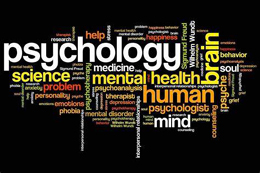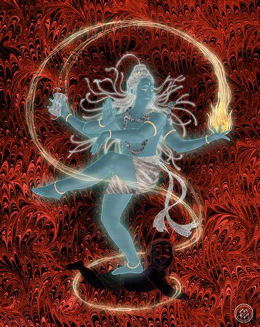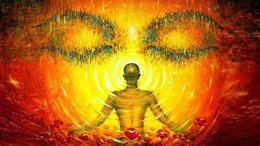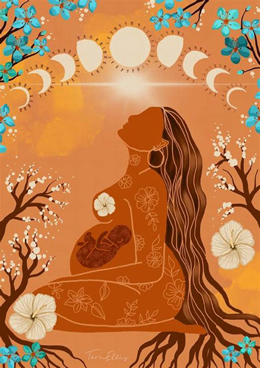Integral health
The Unfinished Chapter of Psychology
Abstract
Human psychology is largely based on human behaviour. It tries to understand this on the basis of past traumas or experiences, the forces of subconscious tendencies, the social/environmental forces and habits and the biological basis of behaviour. While these things have their place, there are other important elements of our complex psychological being. Of great importance is the future possibilities that need to be understood and released through the psycho-therapeutic process.
Ways of approaching the mind
Science is an ever-advancing quest for knowledge. This study however has two complementary sides to reckon with. One is to study objects, events, creatures and people as something static and fixed, bound by laws that are themselves fixed and hence to an extent predictable. It is this predictability that is the benchmark of truth, so to say. If the theories and thesis can be reproduced then one can say with near certainty that it is a correct hypothesis.
However, if an anomaly is found then a fresh study, a new investigation and possibly a new theory is formulated. That is how Science generally advances. This is self-evident in the field of material physics where it is or rather was generally believed that the field of study is static, though, even here, as recent studies indicate, that the solidity of matter is itself an illusion. Behind the apparently perceptible solid phenomenon, there is a world of imperceptible movement, a dance of energy throwing out new patterns that ever repeat the old and hence give us the impression of stability. If the dance were to change, if the habitual motion of particles were to follow another course, then our understanding of things and predictability of events would undergo a tremendous shift.
There is no real way that we can predict the change and its direction unless we take a leap of faith or a leap of reason and assume that behind the cosmic dance, behind the whorl and the patterns, there is an eternal Dancer whose rapturous moods takes the shape of a dance thereby creating systems of worlds. If the rhythm changes, the patterns change, can even collapse or, following the collapse be built again.
It is this powerful and beautiful image that we see in the famous dance of Śiva, Nataraja, whose rhythms can destroy (tānḍavaba) or create (lāsya), giving rise to cycles of cosmic formations leading to the birth of the stars and worlds or shṛsṭi, as well to cosmic destruction or pralaya. The yogin tries to find ways and means to understand the moods of Śiva and Śakti and thereby predicts things that are not yet, but yet shall be. He notices the change before the change begins. It is another kind of Science, another kind of predictability that history vindicates and time justifies even though it is not yet measured or noticed by instruments designed to study the present rhythms and their immediate cause and effect.
If this is true of the material field, it is even more so in the fields of life, of biological sciences where the landscape is ever changing, adapting, evolving. It becomes even more difficult since a new element enters the material world which cannot be observed, let alone measured until the phenomenon has taken place. This new element is intent. In the early stirrings of animal life, this intent can to an extent be bypassed since there is mainly the instinct that governs with as much surety as the laws of material nature. But as animal life develops, it becomes a little more difficult since new and different conditions can arise leading to the change in pattern, new properties and even capacities, which may emerge due to evolutionary challenges. Science generally gets to know about the changes once they are complete. But it is very difficult, in fact, near impossible to know the direction that things will take up and end.
But when it comes to the mind an even more new factor intervenes making it difficult to predict. The intent in animals is largely instinctive but with the development of mind in higher animals and human beings the intent becomes a matter of conscious or semi-conscious choice. To make matters even more complex, what we call as one’s own choice is the result of pressure from several forces from the people and environment around us.
Besides, these forces have an occult dimension that is not yet fully recognised by modern psychiatry that bases itself mostly on biology and internal psychological forces. But there are cosmic forces external to man that push him to act. Thus, for example, a human being is different in a crowd as when he is in the company of individualised human beings. The former simply compels him to act according to some kind of mass effect by sheer volume and pressure of certain kinds of formations that move around as in a market-place. And those who have not organised their thoughts and let it remain like a public square or a market-place swarming with desires are easily swayed by these impulses. It is like a wave that grips the human mind and vital, making it restless and compelling it to act in certain ways that are not only infra-rational but even diabolic.
On the other hand, man has this unique possibility to individualise and thereby choose the forces that will express itself through him while refusing the impulsion and push from another. This element of ‘free choice’ opens for him the doors to a future evolution (or degeneration) based on the choices he makes. Whether this choice is really free or not may be a subject of metaphysical debate. But it makes practically no difference to the fact that, in the absence of sure instinct of the animal world, man is compelled to make choices. But these choices not only relate to his everyday living but to something much deeper and higher than he can ordinarily envisage.
If on the one side these choices can open the doors to regression towards man’s inhuman and animal past as indeed, we witness sometimes in abnormal psychotic phenomenon, they can also open the doors towards luminous kingdoms within and states of consciousness and tracts of light and force and love that lie asleep within us. Modern psychology is yet to explore these uncharted territories that await our discovery through conscious evolution.
Rather, very often it hastily dismisses them as impossible or imaginary.
The hidden territory
Any psychological paradigm of man that does not take into account this greater potential or sees in man either a two-legged animal, armoured with the ability to deceive through speech and hunt and prey using more sophisticated means, or else merely a biological creature product of his genes, has missed the totality of man and his most essential core. True, it is that humanity in the masses is still not individualised. There is still too much of the animal in man that cares mainly for its feeding space, its hunting and mating.
Yet this is not the whole truth of being human. That is why the science of psychology cannot rest with behaviourism or with the analytical schools that look primarily at the deep-rooted animal forces that lie in our underbelly. It must graduate itself and search for the soul within if it has to complete the unfinished book of human nature.
It is here that yoga steps in. Yoga is in fact conscious evolution through intelligent choices. Intelligent choices are not necessarily those choices which make us thrive or survive better in the corporate jungle. Intelligent choices, from the perspective of yoga look beyond our immediate short-term gains and open the doors to a permanent and lasting solution to the enigma called man. Implicit within it is the fact that each time we choose the temporary good or seek mere pleasure and momentary thrills, we are sliding back towards the animal type.
In fact yogic literature describes three gradations of humanity hierarchically arranged from the animal climbing towards the godlike, with the human type standing in between at the crossroads. In other words, there are three layers of our humanity, the animal past, the human present that is not yet complete, and the divine future that shows itself from time to time in exceptional individuals.
Ancient wisdom, especially the spiritual and occult knowledge that developed in India, saw humanity stratified along a number of evolutionary layers. It saw in evolution a double movement. There is an effort to rise towards something higher that is only vaguely surmised. This effort often begins with a challenge that the species or individuals face. Though the challenge itself seems a random event created by chance circumstances, yet there is a wisdom operating from behind that challenges us to evolve. This at least has been the standpoint of Indian psychology, based on the experiences of yogis who were, if we were to use modern terms, psychologists who with courage and faith entered the deepest and closely guarded secrets of human nature and shared their discoveries with those who studied human nature and its secrets under their guidance.
They also documented the results of their research which is what we call today, the scriptures. The word itself is used a little differently in the Indian context than it is in the context of other distinctive religions. In the tradition of Sanatan Dharma there is not one scripture but many, implying thereby that though the fundamental experience of Reality is universal yet it can be perceived from many different angles, depending upon the path one takes to enter into the inner subjective spaces. The various paths through which one entered the inner spaces and reconfirmed old discoveries or made new ones became, each a path of yoga. In this way, it kept the quest for Knowledge and Truth open-ended in a certain sense, not in the fundamental essential Truth but certainly in ways and means of its manifestation in and through human nature.
Thus did the ṛṣis of yore create a wide and plastic social order, taking into account all the varied shades of human nature and intrinsic temperament. The institutions dedicated to such a deeper and comprehensive study of human nature were called, Ashrams. The word derives its true sense from shram or labour, for self-study, self-knowledge, self-realisation, self-mastery, and self-perfection are a tremendous labour and not all are equipped or temperamentally suited for it.
That was the reason for adhikāra bheda, which literally means distinguishing those who are ready to receive this comprehensive knowledge of human psychology in all its details and depths and heights and shades with those who were not yet ready. Of course, they could get ready at a later date but the test of readiness was not performance in exams where memory is tested but the innate temperaments for which examination of a different kind were devised.
Unfortunately, all these things are so much misunderstood in modern times where a divide has been created between man’s deepest seekings and highest strivings and the practical knowledge that helps us deal with everyday situations and circumstances. Or does it? This is the question we must sincerely ask.
Modern psychology and ancient insights
Modern psychology with all its rumbling and rummaging is still too much driven by the study of the animal in man rather the gods chained within, labouring to be released. It uses the word dynamic to describe the inner events yet misses the true dynamic of evolution that is yet going on in the mind-space. But most of all it misses the real man, which is the soul within because the presence of the soul cannot yet be determined statistically even though it can be experienced individually.
The key to understanding man in his totality is with the soul which is one of the key discoveries of Indian Psychology. The other key is to understand the Wisdom operating from within, hidden behind the appearances of life, the Knowledge and Power that works and labours in creation towards evolution of consciousness and development of forms. By ignoring these two crucial elements it misses life’s aim and man’s real purpose.
Of course, there are historical and other reasons for this dissonance but discussing them may be more relevant to the history of Science in the context of human evolution taking place through different ages or epochs of Time. Each age stresses upon one main aspect of human nature, subduing all other aspects to this part that plays a lead role in shaping our thoughts and ideas and ethics and sociology, our self-regard and world-view. It is like the operating system of the mind, the lens given to us through which we look at our self and the world.
In the age that we are just leaving behind us, the dominating principle has been the materialistic analytical mind. It helped mankind probe into matter in its intricate details of functioning. Its advantage was the discovery of the material substrate, the brain and the neuronal network, the molecules that swim in the sea of mind carrying information in coded form. It was but natural that we learnt the science of manipulating matter for psychological results. But its disadvantage was to divorce man’s deepest aspects that are not measurable and cannot be manipulated by material means alone.
Of course, things are neither purely material nor entirely spiritual. We are coming to an Age where material monism has to learn to integrate with the workings of the spiritual forces – understand, accept and accommodate it in the larger scheme of things. At the same time, we have to keep the gains of the Age of Extreme Materialism and use its knowledge meaningfully and in a judicious manner, wisely if one may say so. We are gone past the Age of either-or, when the world was sharply divided between two camps, — spiritual and material. Man is neither a physical birth alone, — he is also and much more truly a spiritual being awaiting the spiritual birth.
And just as physical birth is accompanied by labour pains and the perils of the passage so too with the new spiritual birth, that Nature seems to be now facilitating by quickening the womb of our present human nature, we find the corresponding labour-pains in the psychological being of man leading to various disorders, new and old. To address the psychological problems of today, neither our extreme reductionist models of biological psychiatry, nor the analytical models of psychiatry, that open the doors of the animal forces within but have no clue or access to the higher spiritual forces that await man’s discovery, are enough.
The wave of a New Psychology by whatever name it is called is passing through the human mind to rekindle his interest in spiritual awakening and its sense in our everyday life. It is the demand of Time which is pressing more and more upon man to discover and reclaim our lost portions, — the heights from which we fell, to put it metaphorically. We can call it Indian psychology, though the mystical experience is the same everywhere, because it has been best studied, documented in great detail, replicated again and again in various persons and its science and philosophy still preserved in its books and persons who have had and still have a living contact with these sealed domains thereby changing our entire self-view and world-view.
This is the unfinished chapter of psychology, whose illumined letters put all other chapters in place and give their secret sense and purpose. We may name this new chapter Evolution Next or simply Spiritual Evolution that is seeking to seize upon the human race more and more. What was seen as a promise in a few individuals here and there is now seeking to generalise in the race. Instead of seeing one as a mainstream and the other as an alternative, we need to integrate the two. The mainstream represents the more common, average humanity but this is only because we have never explored its deeper potential. The alternative is simply a word we use to dominate one kind of world-view but if we sincerely seek for truth and not be slaves to systems and theories then we may well discover that the alternate was the real and the mainstream was only a temporary passage, a dark night of the soul, below which another current ran throughout as the true sustaining source of all that we call as our humanity.
Dr. Alok Pandey, an editor of NAMAH and a member of SAIIIHR, is a doctor practising at the Sri Aurobindo Ashram.
Share with us (Comments,contributions,opinions)
When reproducing this feature, please credit NAMAH,and give the byline. Please send us cuttings.







